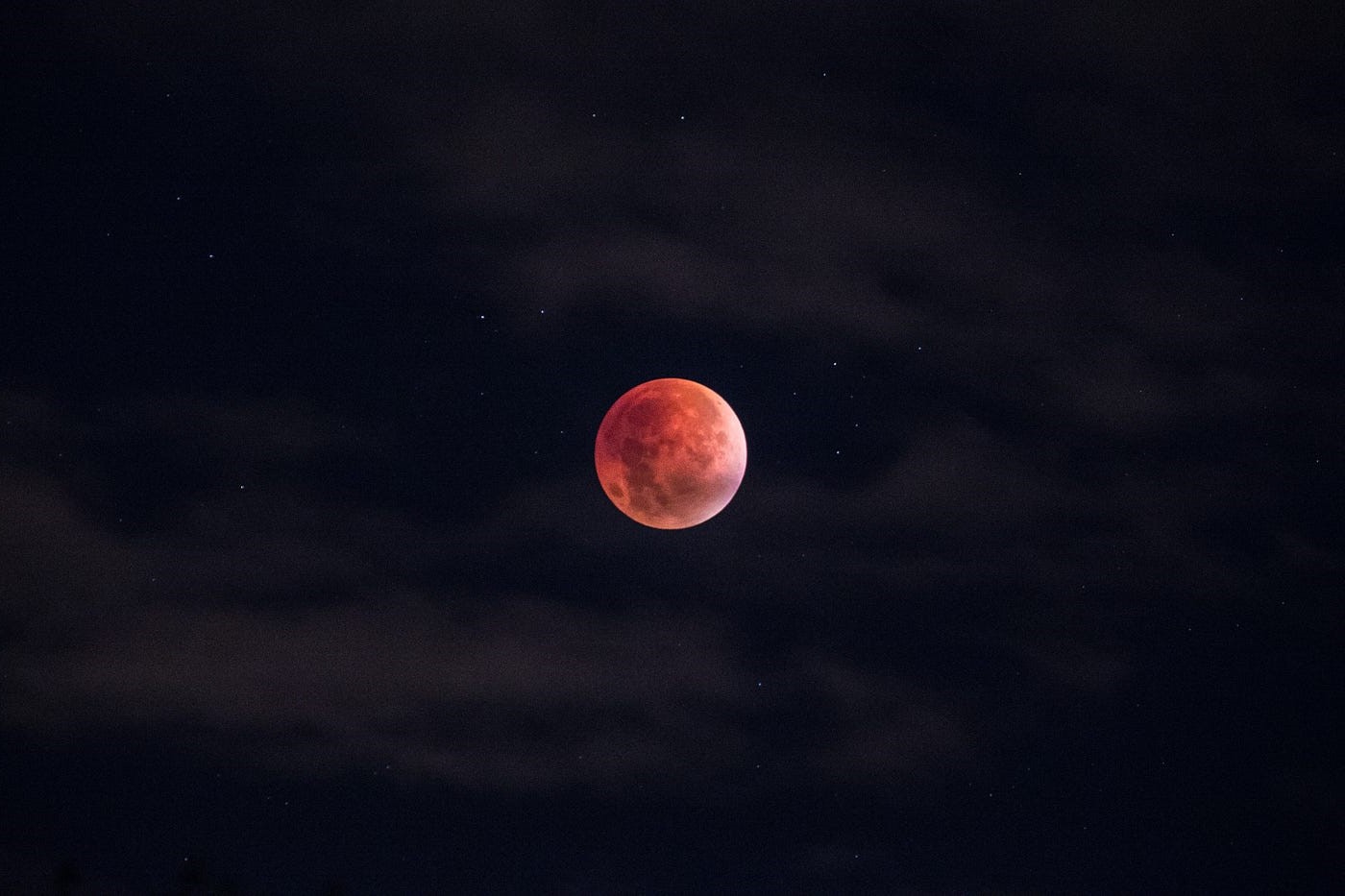
Ever wondered why a blood moon looks so eerie, yet utterly fascinating? Well, you're in for a treat! Blood moons aren't just a feast for the eyes; they're steeped in myths, science, and spine-tingling tales that can make your hair stand on end. Imagine staring up at the night sky as it shifts from its usual deep blue to a mesmerizing shade of crimson. Sounds like something out of a fantasy novel, right? But there's more to these celestial events than meets the eye. From ancient lore to modern-day science, blood moons have captivated humans for centuries. Ready to dive into some of the most astonishing facts about these lunar marvels? Let's unravel the mystery behind the blood moon's captivating glow and its chilling nickname.
Key Takeaways:
- Blood Moons, though eerie, are a natural and frequent occurrence, inspiring art, superstitions, and celebrations across cultures. They offer educational opportunities and continue to captivate humanity with their mystical allure.
- Blood Moons, steeped in history and mythology, are safe to observe and offer unique phenomena like the rare Selenelion and Super Blood Moon. They influence popular culture, sparking creativity in art, literature, and entertainment.
What is a Blood Moon?
A Blood Moon occurs during a total lunar eclipse when Earth positions itself directly between the sun and the moon. This alignment causes the Earth to cast a shadow over the moon. As sunlight passes through Earth's atmosphere, it scatters the shorter blue light wavelengths and allows the longer red wavelengths to reach the moon, giving it a reddish color. This phenomenon is both eerie and fascinating, leading to various interpretations and myths throughout history.
Why Do People Find Blood Moons Scary?
-
Historical Significance: For centuries, Blood Moons have been associated with ominous events, prophecies, and folklore. Many cultures interpreted the reddening of the moon as a sign of impending disaster or divine displeasure.
-
Apocalyptic Associations: In some religious texts, a Blood Moon is seen as a precursor to the end times, adding a layer of supernatural fear to its appearance.
-
Unpredictable Occurrences: Although science can predict when a Blood Moon will occur, its sudden appearance in ancient times without understanding caused fear and speculation among people.
Blood Moon Myths and Legends
-
Native American Lore: Some Native American tribes believed a Blood Moon signaled health and prosperity, while others saw it as a warning of a great change or calamity.
-
Biblical References: In Christianity, the Blood Moon is mentioned in the Book of Joel, Acts, and Revelation, often interpreted as a sign of significant biblical events.
-
Mesopotamian Interpretations: Ancient Mesopotamians viewed lunar eclipses as assaults on the moon. They performed rituals to ward off these perceived threats.
Scientific Facts About Blood Moons
-
Not a Rare Event: Despite their dramatic appearance, Blood Moons occur relatively frequently, about once every 1.5 years, making them a more common phenomenon than one might expect.
-
Color Variations: The exact shade of red can vary from one eclipse to another, influenced by atmospheric conditions such as volcanic ash or pollution levels.
-
Global Visibility: Blood Moons can be seen from anywhere on the night side of Earth, weather permitting, making them a globally observed event.
Cultural Impact of Blood Moons
-
Inspiration for Art and Literature: Blood Moons have inspired countless works of art, literature, and music, reflecting humanity's fascination and fear of this celestial event.
-
Modern Superstitions: Even today, some people believe that a Blood Moon can affect human behavior, similar to the way a full moon is said to influence actions and emotions.
-
Celebrations and Observances: Various cultures host festivals and ceremonies to celebrate or honor the occurrence of a Blood Moon, recognizing its significance in their cultural or religious calendars.
How to Experience a Blood Moon
-
Plan Ahead: Check lunar eclipse schedules to know when the next Blood Moon will occur. This allows for preparations such as finding a good viewing spot.
-
Use Proper Equipment: For a closer look, binoculars or a telescope can enhance the viewing experience, though Blood Moons are clearly visible to the naked eye.
-
Photography Tips: Capturing a Blood Moon requires specific camera settings. Using a tripod and a long lens can help achieve stunning photographs of the event.
Blood Moon Safety Tips
-
No Special Protection Needed: Unlike solar eclipses, watching a lunar eclipse and observing a Blood Moon is safe without any protective eyewear.
-
Comfort is Key: Since viewing can last several hours, ensure you have comfortable seating and appropriate clothing for nighttime temperatures.
-
Stay Informed: Weather conditions can affect visibility, so it’s wise to stay updated on the forecast for the night of the eclipse.
The Future of Blood Moons
-
Predictable Events: Scientists can predict Blood Moons years in advance, allowing for ample planning for those wishing to observe this natural spectacle.
-
Continued Fascination: As long as humans gaze at the night sky, the Blood Moon will continue to captivate and mystify, blending the boundaries between science, mythology, and art.
-
Educational Opportunities: Each Blood Moon offers a chance to learn more about our planet, the moon, and the dynamics of celestial events, making them valuable educational moments.
-
Potential for New Discoveries: As technology advances, future Blood Moons may reveal more about the Earth's atmosphere and space weather, contributing to our understanding of the universe.
Unusual Blood Moon Phenomena
-
Selenelion: A rare occurrence where the sun and the eclipsed moon can be seen in the sky at the same time, due to atmospheric refraction bending the light.
-
Blue Blood Moon: An even rarer event, combining a Blood Moon with a second full moon in a single calendar month, known as a blue moon.
-
Super Blood Moon: Occurs when a Blood Moon coincides with the moon's closest approach to Earth, making it appear larger and brighter in the sky.
-
Blood Moon Tetrad: A series of four consecutive total lunar eclipses with no partial lunar eclipses in between, each separated by six lunar months, a phenomenon that has sparked significant interest and speculation.
Blood Moon in Popular Culture
-
Symbol of Transformation: In movies, books, and television, Blood Moons often symbolize change, mystery, or foreboding, influencing plotlines and character development.
-
Video Games: Many games use Blood Moons as a mechanic to introduce night-time events, challenges, or changes in the game world.
-
Music and Poetry: Artists and poets frequently reference Blood Moons, using its imagery to evoke emotion or convey deep, sometimes dark, themes.
-
Social Media: During Blood Moon events, social media buzzes with photos, experiences, and discussions, bringing people together from across the globe to share in the experience.
-
Conspiracy Theories: Each Blood Moon brings with it a host of conspiracy theories and predictions, ranging from the plausible to the outlandish, reflecting humanity's enduring fascination with this celestial event.
A Final Glimpse at the Blood Moon's Mysteries
Diving into the world of Blood Moons has been nothing short of a thrilling ride. These celestial events, steeped in astronomy and mythology, offer a unique blend of science and folklore that captures the imagination. From their impact on ancient cultures to their role in modern-day astronomical studies, Blood Moons hold a special place in the night sky and in our hearts. They remind us of the universe's vastness and the endless mysteries waiting to be unraveled. As we've journeyed through the scary facts and myths, it's clear that Blood Moons are more than just an astronomical phenomenon; they're a bridge between the past and present, science and superstition. So, next time one graces the sky, take a moment to marvel at its beauty and ponder the stories it tells.
Frequently Asked Questions
Was this page helpful?
Our commitment to delivering trustworthy and engaging content is at the heart of what we do. Each fact on our site is contributed by real users like you, bringing a wealth of diverse insights and information. To ensure the highest standards of accuracy and reliability, our dedicated editors meticulously review each submission. This process guarantees that the facts we share are not only fascinating but also credible. Trust in our commitment to quality and authenticity as you explore and learn with us.


